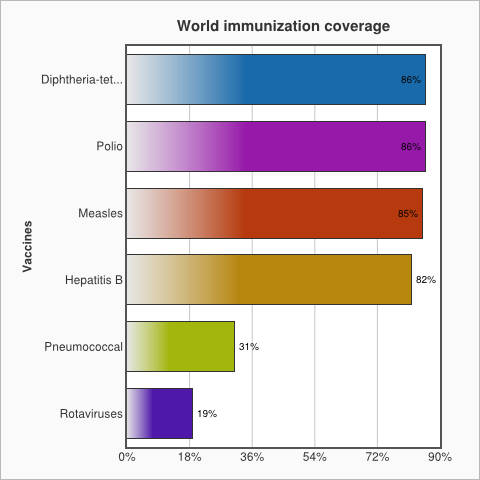Theme: #VaccinesWork
- Immunization prevents illness, disability and death from vaccine-preventable diseases including cervical cancer, diphtheria, hepatitis B, measles, mumps, pertussis (whooping cough), pneumonia, polio, rotavirus diarrhoea, rubella and tetanus.
- Highlight the importance of immunization as a top global health investment priority.
- Promote understanding of the action steps required to achieve the Global Vaccine Action Plan.
- Showcase immunization’s role in sustainable development and global health security.
Why immunization matters now more than ever:
Expanding access to immunization is crucial to achieving the Sustainable Development Goals. Routine immunization is a building block of strong primary health care and universal health coverage—it provides a point of contact for health care at the beginning of life and offers every child the chance at a healthy life from the start.
Immunization is also a fundamental strategy in achieving other health priorities, from controlling viral hepatitis, to curbing antimicrobial resistance, to providing a platform for adolescent health and improving antenatal and newborn care.
Key facts
Global vaccination coverage is generally holding steady.
Uptake of new and underused vaccines is increasing.
Immunization currently averts an estimated 2 to 3 million deaths every year. An additional 1.5 million deaths could be avoided, however, if global vaccination coverage improves.
An estimated 19.4 million infants worldwide are still missing out on basic vaccines.
- 78% of children have received all basic vaccinations, and 38%
have received all age-appropriate vaccinations. - Ninety-eight percent of children have received BCG.
- 97% have received the first dose of pentavalent, and 98% have received polio 1.
- Eighty-six percent and 88% of children have received the third doses of the pentavalent and polio vaccines, respectively.
- Coverage of vaccination against measles rubella is 90%.
- One percent of children in Nepal have not received any vaccinations.




